#rotatorcuffinjuries
Explore tagged Tumblr posts
Text
orthopedic surgeon doctor in Murlipura
Struggling with Shoulder Pain? Let’s Fix It!
Shoulder pain can turn simple everyday movements into a challenge. If lifting your arm feels like a struggle, or if your shoulder feels stiff and won’t move like it used to, you’re not alone. It might be a sign of something more, like Frozen Shoulder, a Rotator Cuff Injury, or even Arthritis—but the good news is, there’s help available.
Signs You Shouldn’t Ignore:
✔ Pain when lifting or reaching with your arm ✔ Stiffness or difficulty moving your shoulder ✔ Pain that gets worse at night or with movement ✔ A nagging feeling that your shoulder just isn’t working right
Waiting too long can make things worse, leading to more stiffness, pain, and reduced mobility. The sooner you get it checked, the easier and faster the recovery.
Meet Your Shoulder Expert in Murlipura
If you’re looking for an orthopedic surgeon doctor in Murlipura who truly understands shoulder pain, Dr. Shubham Agarwal is here for you. He specializes in treating shoulder conditions with advanced, minimally invasive techniques that help you heal faster and get back to doing what you love.
Why Choose Dr. Shubham Agarwal?
✔ Experienced in treating shoulder injuries and joint problems ✔ Advanced solutions for Frozen Shoulder, Rotator Cuff Tears, and Arthritis ✔ Focuses on minimally invasive treatments for quicker recovery ✔ A patient-first approach that ensures you feel heard and cared for
Let’s Get You Back to Pain-Free Movement!
Shoulder pain shouldn’t hold you back. Whether it’s an old injury or something new, expert help is just a consultation away. Dr. Shubham Agarwal, a trusted orthopedic surgeon doctor in Murlipura, is here to help you move freely again.
📞 Book Your Appointment Today!
#ShoulderPain#FrozenShoulder#RotatorCuffInjury#ArthritisRelief#OrthopedicCare#SportsInjury#PainRelief
0 notes
Text



Dr. Sonu Sharma is here to provide personalized, expert care to help you regain your mobility, strength, and quality of life. As one of the best female physiotherapists in Jhotwara, Niwaru Road, Dr. Sharma specializes in offering Best Home Visit physiotherapist in Jhotwara for all your recovery needs.
:
🌟 best_Physiotherapist_in_Jhotwara_jaipur
🌟 best_Home_visit_Physiotherapist_in_Jhotwara_Jaipur
🌟 Shoulder Pain Treatment
🌟 Physiotherapy for Shoulder Pain 🌟 Orthopedic Specialist Jaipur
:
Address: Plot No14, Gahlot Nagar, Nangal Jaisa Bohra, Jhotwara, Jaipur, Rajasthan 302012
:
Phone: 082901 55690
:
🌐 visit: https://maps.app.goo.gl/8FBW93Y5VK8sEsKq7
:
#ShoulderPain #Physiotherapy #PainRelief #OrthopedicCare #ShoulderInjury #FrozenShoulder #RotatorCuffInjury #JointHealth #ShoulderMobility #SportsInjury #PainFreeLife #DoctorConsultation #ShoulderHealth #InjuryPrevention #PhysioCare #MuscleRecovery #HealthyJoints #BackToFitness #Physiotherapy #PainRelief #PhysiotherapistNearMe #SportsInjury #Mobility #PostpartumRecovery #BackPain #KneePain #PhysicalTherapy #Fitness #HealthyLiving #Rehab #Healing #ChronicPain #Wellness #PhysioCare #InjuryRecovery #PainManagement #SportsRehab #PostSurgeryCare #StayActive #PlotNo14 #GahlotNagar #NangalJaisaBohra #Jhotwara #Jaipur #Rajasthan #JaipurRealEstate #ResidentialPlot #JaipurProperties #RajasthanRealEstate #PlotForSale #GahlotNagarProperty #JaipurLiving #RealEstateInvestment #JaipurHomes #JhotwaraJaipur #JaipurPlots #RajasthanLiving #PropertyInJaipur #RealEstateInRajasthan #NangalJaisaBohraPlots #JaipurPropertyMarket #VidhyadharNagar #Murlipura #BaniPark #DaharKaBalaji #Sanganer #MalviyaNagar #CivilLinesJaipur #RajaPark #C-Scheme #AjmerRoadJaipur #VaishaliNagar #Jagatpura #TonkRoadJaipur #JaipurCity #JaipurRealEstate #JaipurLiving #RajasthanProperties #JhotwaraArea #RealEstateJaipur
#ShoulderPain#Physiotherapy#PainRelief#OrthopedicCare#ShoulderInjury#FrozenShoulder#RotatorCuffInjury#JointHealth#ShoulderMobility#SportsInjury#PainFreeLife#DoctorConsultation#ShoulderHealth#InjuryPrevention#PhysioCare#MuscleRecovery#HealthyJoints#BackToFitness#PhysiotherapistNearMe#Mobility#PostpartumRecovery#BackPain#KneePain#PhysicalTherapy#Fitness#HealthyLiving#Rehab#Healing#ChronicPain#Wellness
1 note
·
View note
Text
If you are suffering from Knee Sprain, Back Pain, Joint Pain, Shoulder Pain, Neck Pain, Tennis Elbow, Rotator Cuff Injury, Ankle Sprain, Concussion, Lumbar Strain/Sprain, Twisting Injury, or Fractures, it’s time to consult a physiotherapist for expert treatment. At DKPS Pvt Ltd, we provide specialized care to relieve pain, improve mobility, and promote faster recovery through home visit and clinic services. https://drsinghphysiocare.com/therapies/
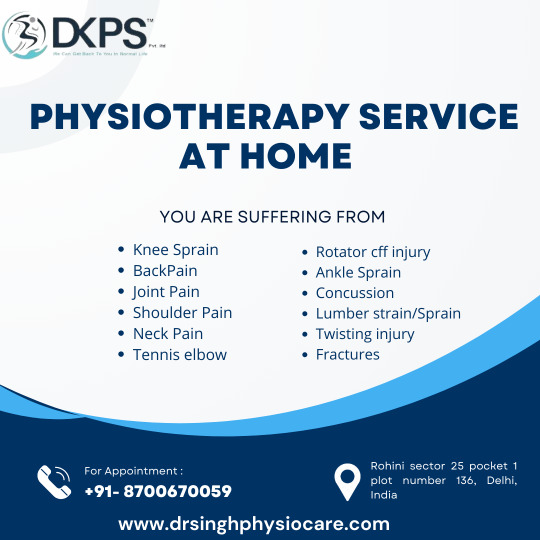
Physiotherapy #PainRelief #KneeSprain #BackPain #JointPain #InjuryRecovery #DKPSPvtLtd #Health #PhysioCare #RotatorCuffInjury
0 notes
Link
Swimming is a great way to stay fit and healthy, but it can also lead to injuries. One common injury among swimmers is shoulder pain, which is known as swimmer's shoulder. This condition can be caused by overuse, poor technique, or a lack of conditioning. Symptoms of swimmer's shoulder can include pain, weakness, and limited mobility in the shoulder joint. The pain may be sharp or dull and can be felt in the front, back, or top of the shoulder. Swimmers may also experience difficulty lifting their arm or rotating their shoulder. It's important to recognize the symptoms of swimmer's shoulder early on to prevent further damage. Treatment options include rest, physical therapy, and anti-inflammatory medication. With proper care, swimmers can recover from swimmer's shoulder and get back in the pool. 🏊♀️🏊♂️1. Understanding Swimmer's Shoulder: Causes and Risk FactorsSwimmer's shoulder is a common injury among swimmers. It occurs due to repetitive overhead movements, poor technique, and muscle imbalance. Risk factors include age, training intensity, and previous injuries. Early diagnosis and treatment are crucial to prevent long-term damage. 🏊♀️ Causes of swimmer's shoulder include rotator cuff impingement, tendinitis, and bursitis. These conditions cause pain, weakness, and limited range of motion. Treatment options include rest, physical therapy, and anti-inflammatory medication. Prevention strategies include proper technique, strength training, and stretching. 💪 Swimmers who train intensely and frequently are at higher risk of developing swimmer's shoulder. Age also plays a role, as older swimmers are more susceptible to injury. Previous shoulder injuries can also increase the risk of developing swimmer's shoulder. 🤕 Muscle imbalances, such as weak rotator cuff muscles and tight chest muscles, can contribute to swimmer's shoulder. Poor technique, such as crossing the midline or overreaching, can also cause injury. Swimmers should focus on proper technique and strength training to prevent injury. 🏋️♀️ In conclusion, swimmer's shoulder is a common injury among swimmers caused by repetitive overhead movements, poor technique, and muscle imbalance. Risk factors include age, training intensity, and previous injuries. Early diagnosis and treatment are crucial to prevent long-term damage. Prevention strategies include proper technique, strength training, and stretching. 🙌2. Common Symptoms of Swimmer's Shoulder: Pain and Limited MobilitySwimmer's shoulder is a common injury among swimmers. It is characterized by pain and limited mobility in the shoulder area. Pain is usually felt in the front of the shoulder and can be sharp or dull. Shoulder mobility is limited, making it difficult to perform swimming strokes. Swelling and tenderness may also be present in the affected area. Other symptoms include: Weakness in the affected arm Pain that worsens with activity Pain that persists even at rest If you experience any of these symptoms, it is important to seek medical attention. Ignoring the symptoms can lead to further damage and longer recovery time. Prevention is key. Proper warm-up and stretching before swimming can help prevent swimmer's shoulder. Strengthening exercises for the shoulder muscles can also help prevent injury. 🏊♀️🏊♂️ Remember, taking care of your body is essential for a successful swimming career. Don't let swimmer's shoulder hold you back!3. Diagnosing Swimmer's Shoulder: Physical Examination and Imaging TestsDuring a physical examination, a doctor will check for pain, range of motion, and strength in the shoulder. Imaging tests such as X-rays, MRI, and ultrasound can help diagnose swimmer's shoulder. X-rays can rule out other injuries such as fractures. MRI can show soft tissue damage such as tears or inflammation. Ultrasound can identify rotator cuff tears and tendonitis. A doctor may also perform a shoulder impingement test, which involves raising the arm to see if pain is present. A Neer test can also be done to check for impingement. It's important to get an accurate diagnosis to determine the best course of treatment. Treatment options may include rest, physical therapy, anti-inflammatory medication, and in severe cases, surgery. Swimmer's shoulder can be prevented by warming up properly, using proper technique, and gradually increasing training intensity. Don't let swimmer's shoulder keep you out of the pool 🏊♀️🏊♂️.4. Treatment Options for Swimmer's Shoulder: Rest, Rehabilitation, and SurgerySwimmer's shoulder can be treated through rest, rehabilitation, or surgery. The treatment option depends on the severity of the injury. Rest involves avoiding activities that cause pain and inflammation. Ice and pain relievers can help reduce pain and swelling. Rehabilitation includes exercises to strengthen the shoulder and improve range of motion. Physical therapy can speed up the recovery process. Surgery is recommended for severe cases that do not respond to other treatments. It involves repairing or removing damaged tissues. Recovery time varies depending on the treatment option chosen. Rest and rehabilitation can take several weeks to months, while surgery may require several months of recovery. It's important to consult a healthcare professional for proper diagnosis and treatment. Early intervention can prevent long-term damage and chronic pain. 🩺5. Preventing Swimmer's Shoulder: Proper Technique and Strengthening ExercisesSwimmer's shoulder is a common injury caused by repetitive overhead motion. Here are some tips to prevent it: 🏊♂️ Focus on proper technique, including a high elbow catch and a smooth recovery. 🏋️♀️ Strengthen your rotator cuff muscles with exercises like external rotations and shoulder presses. 🧘♂️ Incorporate stretching and mobility exercises to improve range of motion and prevent tightness. 🏊♀️ Gradually increase training volume and intensity to avoid overuse injuries. 🏋️♂️ Cross-train with activities like yoga or Pilates to improve overall strength and flexibility. 💆♀️ Take breaks and rest when necessary to allow your body to recover and prevent burnout. By following these tips, you can prevent swimmer's shoulder and stay injury-free in the pool.6. Living with Swimmer's Shoulder: Coping Strategies and Long-Term OutlookLiving with swimmer's shoulder can be challenging, but there are coping strategies to help manage pain and discomfort. 🏊♀️ Modify your swimming technique to avoid further injury. 🏋️♀️ Strengthen your shoulder muscles with targeted exercises recommended by a physical therapist. 💆♀️ Consider massage therapy or acupuncture to alleviate pain. 🧘♀️ Incorporate yoga or Pilates into your exercise routine to improve flexibility and prevent future injuries. 👩⚕️ Consult with a healthcare professional to determine the best treatment plan for your individual needs. 🏥 In severe cases, surgery may be necessary, but most cases can be managed with non-invasive methods. 🌞 With proper care, most individuals with swimmer's shoulder can return to their normal activities within a few months. 🙌 Remember to listen to your body and take breaks when needed. 🌟 Stay positive and focus on your progress, not setbacks. 💪 You got this! In conclusion, swimmer's shoulder is a common injury among swimmers. Symptoms include pain, weakness, and limited range of motion. Early diagnosis and treatment are crucial to prevent long-term damage. If you experience any of these symptoms, seek medical attention and rest the affected shoulder. Strengthening exercises and proper technique can also prevent swimmer's shoulder. Don't let this injury hold you back from enjoying your time in the pool 🏊♀️💪. Remember to warm up before swimming and gradually increase intensity. Listen to your body and take breaks when needed. With proper care, you can prevent and manage swimmer's shoulder. Stay safe and happy swimming! 🌊👍 https://symptomfinder.com/symptoms-of-swimmers-shoulder/?_unique_id=6495a3b2b577e
#Uncategorised#Overuseinjuries.#Rotatorcuffinjury#Shoulderimpingementsyndrome#Shoulderinstability#Swimmersshoulderpain#aiomatic_0
0 notes
Photo
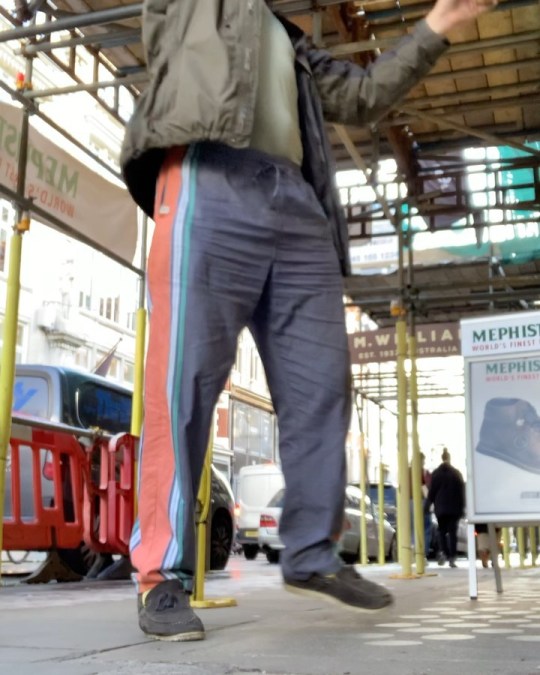
Would you do this with a right shoulder rotator cuff injury? I do admit I have a problem slowing down where exercise is concerned. Probably there’s not a day in a seven day week when I’m doing some sort of exercise. Even when I woke up today feeling poorly and I was out and about as seen here in Bond Street. I saw some construction and scaffold and I couldn’t resist doing some hanging exercises. I just can’t help it challenging myself, and this way I feel I can recover from injury is faster than I thought I did nothing or Little. #streetworkouts #workaroundinjuries #rotatorcuffinjury #hangingstrength https://www.instagram.com/p/CkbjZoyj8kf/?igshid=NGJjMDIxMWI=
0 notes
Photo

Are non-surgical treatments still not healing your shoulder pain? You may need Rotator Cuff Surgery. You can get the best treatment with the fastest recovery rate at Regenio. For more information please click the link….https://bit.ly/3mpgwuD
Or you may call us for an appointment: 8008452222
0 notes
Video
instagram
57 Segundos - Reparación de lesión masiva del manguito rotador. Seguir una secuencia estandarizada para la reparación de las lesiones del manguito rotador es clave para lograr reparaciones anatómicas, sin tensión del tendón en pacientes con lesiones grandes y masivas. Inicialmente se requiere una liberación 360 grados de la cápsula articular, sinovectomía y bursectomía seguida de la liberación del ligamento coracohumeral en la coracoides. Se debe fijar desde anterior hacia posterior, primero el tendón del subescapular, reconstituir los pilares del intervalo rotador, hacer suturas de convergencia de posteromedial a anterolateral según cada caso y luego colocar anclajes que fijan el tendón al hueso. En este caso usamos dos anclajes en la fila medial, y con estos hicimos una doble fila dependiente con un anclaje en la fila lateral. Música: Trip to the East Músico: Alexei De Bronhe URL: https://icons8.com/music/ #manguitorotador #rotatorcuff #cirugiamanguitorotador #shouldersurgery #rotatorcuffrepair #manguitorotadorhombro #anchors #shoulderanchor #sutura #suture #rotatorcuffprogram #rotatorcuffinjury #rotatorcuffrehab #reparacióndemanguitorotador (en Unidad De Especialistas Santafe Real) https://www.instagram.com/p/CT9fKgZF5UU/?utm_medium=tumblr
#manguitorotador#rotatorcuff#cirugiamanguitorotador#shouldersurgery#rotatorcuffrepair#manguitorotadorhombro#anchors#shoulderanchor#sutura#suture#rotatorcuffprogram#rotatorcuffinjury#rotatorcuffrehab#reparacióndemanguitorotador
0 notes
Photo

WHAT ARE THE SYMPTOMS OF A ROTATOR CUFF TEAR OR INJURY?
Immediate Pain
Dull Pain
Pain While Lying Down
Weakness and Restricted Range of Motion
Get the best consultation for rotator cuff injury with Dr. Lalit Bafna . Book online appointment visit website https://www.drlalitbafna.com/shoulder-arthroscopy.php
Our Location: https://goo.gl/maps/SwcqaNC9Tj26gJFV9
Or Call us: 8287082133
0 notes
Text
Rotator Cuff Injury, Diagnosis, And Stem Cell Treatment For Rotator Cuff Injury
The rotator cuff is a set of four muscles and tendons that attach the shoulder blade to the proximal part of the arm or the proximal humerus, it serves to stabilize the shoulder and socket and also helps to lift and rotate the arm.
Rotator cuff common injuries and causes: common injuries to the rotator cuff include inflammation of the tendon itself or the surrounding tissue called the rotator cuff tendonitis or subacromial bursitis or more significant injuries such as tears.
These tears can be small or partial in size or they can involve the entire tendon’s full thickness and be quite large, they occur because of wear and tear as we age or from acute traumatic injuries.
Symptoms: Symptoms of rotator cuff injury are following such as
Pain on the outside of the shoulder down the arm and up to the neck.
Inability to raise one’s arm above shoulder level
Continuous pain in the shoulder regardless of night or day but more if resting on the affected shoulder.
Difficulty in rotating and weakness in lifting the arms.
Treatment for rotator cuff injury: Treatment for rotator cuff can involve simple measures such as rest and activity modification to avoiding activities that are painful for your shoulder, to things like physical therapy and icing the shoulder, and pain medication such as anti-inflammatory medications like ibuprofen and aspirin.

Surgical treatment for rotator cuff injury: Surgery is a good option for the treatment of rotator cuff injury or tears when non-surgical measures such as physical therapy and pain medications have failed to provide symptomatic relief over a period of time.
Other reasons for surgery include a large tear or tears that are resulted from an acute traumatic injury, finally, if someone has a high demand occupation that requires a lot of overhead shoulder activity, this may be another reason to consider surgical fixation.
Surgery is typically performed arthroscopically although an open incision may be needed in rare cases. The arthroscopic approach uses small incisions around the shoulder to insert a camera and arthroscopic equipment to perform the work.
The goals of surgery are to remove inflammation, remove the diseased portion of the rotator cuff and repair the rotator cuff tendon back into the bone.
For more information visit https://shifarejuvenation.com/
The recovery period of surgery: Recovery after surgery can be lengthy and can progress over several months, typically the patient will be in a sling for four to six weeks after surgery and continues for five and six months.
Physical therapy for rotator cuff injury: Physical therapy is usually individualized and prescribed by the surgeon after surgery is performed, in general, however, the patient starts with passive range of motion exercise where motion is generated by the therapist and later towards the active range of motion where the patient performs the range of motion exercises. After a range of motion has returned, strengthening exercises can begin.
The prognosis for rotator cuff repairs is excellent, particularly in terms of pain relief, functional results can continue to improve even out to one year. The majority of the patient will return to a high portion of their activities within four to six months including sports.
Stem cell treatment/injections for rotator cuff injury: Stem cell therapy helps repair rotator cuff injury and tears using minimally invasive and ultrasound-guided injection precisely into the torn areas of the muscle and tendons.
The results from the stem cell therapy have resulted in more than 70% of patients who received groundbreaking stem cell therapy for rotator cuff injury noted improvements in range and of motion and inflammation reduction of 80% on average.
Further clinical trials have also shown that patients benefited from quicker recovery and can get back to things they love faster than those who undergo traditional surgery and treatments.
Sadly 6 out of 10 patients of rotator cuff injury surgery don’t heal afterward, in fact, a US government-sponsored investigation into healthcare quality recently reviewed more than 150 published studies and concluded that there was no solid evidence that rotator cuff surgery benefited patients any more than no surgery at all.
Stem cell therapy highly enriched regenerative stem cells contains multiple growth factors and cytokines which not only accelerate recovery but also stimulate the recovery process of tissue regeneration which directly results in inflammation reduction and pain relief and optimization in quality of life for suffering patients.
#stem cells#stemcellpakistan#shifarejuvenation#stemcelltherapy#stem cell research#rotatorcuff#rotator cuff injury treatment#rotatorcuffinjury
0 notes
Quote
Rotator Cuff Injury Symptoms

The pain related with a rotator cuff injury might:
Be described as a dull pain deep in the shoulder
Disturb sleep
Make it hard to comb your hair or reach behind your back
Be followed by arm weakness
0 notes
Photo
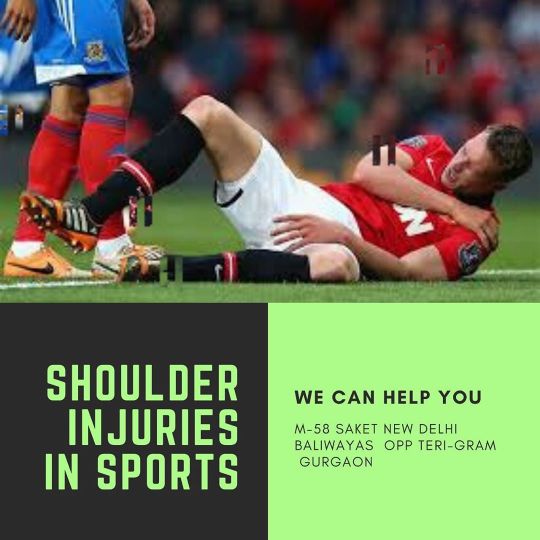
Shoulder injuries in Sports #wecanhelpyou #SHOULDERPAIN#SHOULDERJOINTARTHERITIS#TENDINITS #SHOULDERIMPINGMENT #SHOULDERBURSITIS #SUPRASPINATUS TEAR #SUPRASPINATUSTENDINOPATHY #SHOULDERINSTABILITY #PARSONAGETURNERSYNDROME #PECTORISMAJORTEAR #ROTATORCUFFINJURY #SUBACROMIALBURSITIS #FROZENSHOULDER #PHYSIOTHERAPISTNEARME #SPORTSPHYSIO #REHAB #ELITEPHYSIOSAKET #ELITEPHYSIOGURGAON (at Elite physiotherapy and sports injury centre) https://www.instagram.com/p/CC1XzGagb9V/?igshid=ht0v15ak224l
#wecanhelpyou#shoulderpain#shoulderjointartheritis#tendinits#shoulderimpingment#shoulderbursitis#supraspinatus#supraspinatustendinopathy#shoulderinstability#parsonageturnersyndrome#pectorismajortear#rotatorcuffinjury#subacromialbursitis#frozenshoulder#physiotherapistnearme#sportsphysio#rehab#elitephysiosaket#elitephysiogurgaon
0 notes
Text
How Rotator Cuff Injury occurs?
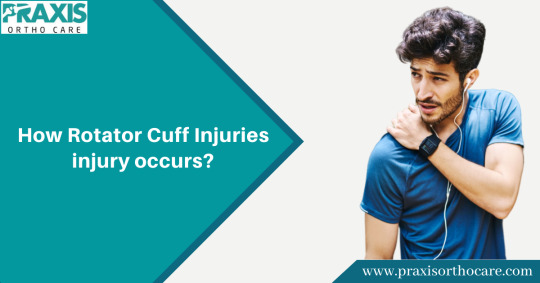
A rotator cuff tear usually occurs in people who repeatedly perform the same shoulder motions in their jobs or sports. Examples include painters, carpenters, and people who play a massive role as an athlete.
To know more, visit: https://bit.ly/37No9kl
0 notes
Link
🔍 Subscapularis tear is a common injury that affects the shoulder joint. It occurs when the subscapularis muscle, which is located in the front of the shoulder, is torn. This injury can cause a range of symptoms, including pain, weakness, and limited mobility. 🤕 The causes of subscapularis tear can vary, but it is often associated with repetitive overhead movements, such as throwing a ball or lifting weights. Other risk factors include age, gender, and previous shoulder injuries. Early diagnosis and treatment are essential to prevent further damage and promote healing. 💊 Treatment options for subscapularis tear depend on the severity of the injury. Conservative measures, such as rest, ice, and physical therapy, may be effective for mild cases. However, more severe tears may require surgery to repair the muscle. With proper treatment, most people can recover from a subscapularis tear and return to their normal activities.1. What is a Subscapularis Tear and How Does it Occur?The subscapularis muscle is located in the shoulder and helps rotate the arm. A tear can occur from overuse or injury. Symptoms include pain, weakness, and limited mobility. Diagnosis is done through physical examination and imaging. Treatment options include rest, physical therapy, and surgery. 🏥2. Identifying Subscapularis Tear Symptoms: Pain and Weakness in the Shoulder🔍 Subscapularis tear symptoms include pain and weakness in the shoulder. 🔍 Pain may be felt in the front of the shoulder or upper arm. 🔍 Weakness may make it difficult to lift the arm or perform daily activities. 🔍 Other symptoms may include a popping or clicking sensation in the shoulder. 🔍 If you experience these symptoms, see a doctor for a proper diagnosis. 🔍 Treatment options may include physical therapy, medication, or surgery. 🔍 Early diagnosis and treatment can lead to a quicker recovery. 🔍 Don't ignore these symptoms, as they can worsen over time. 🔍 Take care of your shoulder and seek medical attention if necessary.3. Diagnostic Tests for Subscapularis Tear: MRI and Physical ExaminationTwo diagnostic tests for subscapularis tear are MRI and physical examination. MRI is a non-invasive imaging test that uses magnetic fields and radio waves to create detailed images of the shoulder. Physical examination involves testing the strength and range of motion of the shoulder joint. MRI is the most accurate diagnostic test for subscapularis tear. It can detect tears in the subscapularis muscle and determine the severity of the tear. It is also useful in identifying other shoulder injuries that may be present. Physical examination is a quick and easy test to perform. It involves a series of movements and tests to assess the strength and mobility of the shoulder joint. It can help diagnose subscapularis tears, but it is not as accurate as MRI. Both MRI and physical examination are important in diagnosing subscapularis tears. MRI is the gold standard for accuracy, while physical examination is a useful tool for initial assessment. Consult with a healthcare professional to determine the best course of action for diagnosis and treatment. 🧐👨⚕️💪4. Conservative Treatment Options for Subscapularis Tear: Rest, Ice, and Physical TherapyConservative treatment options for subscapularis tear include rest, ice, and physical therapy. Rest: Avoid activities that aggravate the injury and allow the shoulder to rest. Ice: Apply ice packs to the affected area for 20 minutes at a time, several times a day to reduce pain and swelling. Physical therapy: Strengthening and stretching exercises can improve range of motion and reduce pain. Physical therapy may also include modalities such as ultrasound, electrical stimulation, and heat therapy. Conservative treatment may take several weeks to months to show improvement, but it can be effective in treating subscapularis tears. If conservative treatment fails, surgery may be necessary to repair the tear. 👍 Remember to consult with a healthcare professional before starting any treatment plan for subscapularis tear. 👍5. Surgical Treatment for Subscapularis Tear: Arthroscopic Repair and Open SurgeryArthroscopic repair is a minimally invasive surgery that uses a small camera to view the subscapularis tear. This method allows for smaller incisions and faster recovery time. Open surgery involves a larger incision and direct visualization of the tear. Both methods have high success rates and are determined by the severity of the tear. Consult with a qualified surgeon to determine the best treatment option. 💉💪 Arthroscopic repair is typically recommended for smaller tears, while open surgery is reserved for larger tears. Recovery time can vary, but physical therapy is crucial for regaining strength and mobility. Complications such as infection and nerve damage are possible but rare. Discuss potential risks and benefits with your surgeon. 💊👨⚕️ Post-operative care includes pain management, wound care, and physical therapy. It is important to follow your surgeon's instructions for a successful recovery. Return to full activity can take several months, but most patients experience significant improvement within the first few weeks. 🏋️♀️👍 In conclusion, surgical treatment for subscapularis tear can involve arthroscopic repair or open surgery. Both methods have high success rates and are determined by the severity of the tear. Post-operative care and physical therapy are crucial for a successful recovery. Consult with a qualified surgeon to determine the best treatment option for you. 💪👨⚕️6. Recovery and Rehabilitation for Subscapularis Tear: Timeline and ExercisesRecovering from a subscapularis tear can take several months. It's important to follow a rehabilitation program to regain strength and mobility. Week 1-4: Focus on gentle range of motion exercises and pain management. Week 4-8: Begin strengthening exercises with resistance bands or light weights. Week 8-12: Increase resistance and add more complex exercises. Exercises should target the subscapularis muscle, as well as the surrounding muscles that support the shoulder joint. Internal rotation with resistance band Scapular retraction with resistance band Shoulder external rotation with dumbbell Shoulder flexion with dumbbell It's important to listen to your body and not push yourself too hard, too fast. Gradual progress is key to avoiding re-injury. Other rehabilitation options may include physical therapy, massage, and acupuncture. Consult with a healthcare professional for personalized treatment. 👍 Stay consistent with your rehabilitation program and be patient with your progress. Recovery takes time, but with dedication and effort, you can regain strength and mobility in your shoulder. 💪7. Preventing Subscapularis Tear: Strengthening Exercises and Proper Technique for Shoulder MovementsStrengthening exercises are essential to prevent subscapularis tear. Proper technique for shoulder movements also reduces the risk of injury. Exercises like internal rotation, external rotation, and scapular retraction help strengthen the subscapularis muscle. Stretching exercises help improve flexibility and reduce the risk of injury. Proper technique for shoulder movements includes keeping the shoulders down and back, avoiding excessive force, and using proper form. It is important to warm up before exercising and to gradually increase the intensity of the workout. Start with light weights and gradually increase the weight as you get stronger. Listen to your body and stop if you feel pain or discomfort. Consult a doctor or physical therapist if you have any concerns about your shoulder health. Remember to rest and recover between workouts to prevent overuse injuries. Take breaks between sets and workouts to give your muscles time to recover. Get enough sleep and eat a balanced diet to support muscle recovery. Use ice or heat therapy to reduce inflammation and promote healing. By following these tips, you can prevent subscapularis tear and maintain healthy shoulders. 💪🏼👍🏼 In conclusion, subscapularis tear symptoms can be debilitating, affecting daily activities and causing pain. Early diagnosis and treatment are crucial for a successful recovery. 🏥💪 Treatment options include physical therapy, medication, and surgery. Consult with a healthcare professional for proper diagnosis and treatment. 🩺👨⚕️ Prevention is key, so avoid overuse, maintain good posture, and practice proper lifting techniques. Stay healthy and active! 🏋️♀️🌟 https://symptomfinder.com/subscapularis-tear-symptoms-causes-and-treatment/?_unique_id=6493ff901c43c
#Uncategorised#Physicaltherapy#Rotatorcuffinjury#Shoulderpain#Subscapularistear#SurgicalIntervention.#aiomatic_0
0 notes
Video
youtube
http://advancephysiowaterford.ie
Rotator Cuff Injuries – Advance Physio Waterford
Relief of Rotator Cuff Injuries in Waterford City
If you are suffering from a Rotator Cuff Injury, call us in our Waterford City practice today on (051)844471 to book your appointment.
Advance Physio Waterford
The Cove Centre
Dunmore Road
Waterford X91 ANP5
(051)844471
http://advancephysiowaterford.ie
Advance Physio Waterford is located on the Dunmore Road in Waterford City. We successfully treat back pain and other painful conditions. We provide morning, afternoon and evening appointments. Your treatments are covered by all of the main health insurers including VHI, LAYA, Aviva Health, HSF, ESB Medical and Garda Medical Aid. Your treatments are also eligible for MED-1 Form tax refund.
At Advance Physio Waterford, treatment approach consistently brings resolution to painful conditions and sport's related injuries. Treatment is generally successful treating acute injuries/painful flare-ups and also when confronting chronic long-standing and stubborn conditions including:
- Rotator Cuff Injuries
- Back Pain
- Sports Injuries
- Arthritis
- Headaches
- Sciatica
- Fibromyalgia
- Knee Pain
- Shoulder Pain
- Tendonitis
- Leg Pain
- Hip Pain
- Arm Pain
- Thigh Pain
- Foot Pain
- Bursitis
- Plantar Fasciitis
- Shin Splints
- Whiplash
- Ankle Pain
- Herniated Discs
And many other painful conditions…
Take the first step towards resolving your painful condition/injury by calling us today to schedule your visit in Waterford City on (051)844471. We look forward to hearing from you and I really hope that you enjoyed the video.
Thanks,
Anthony.
Physiowaterford, waterfordphysio, physiotherapywaterford,Waterfordphysiotherapy, physicaltherapywaterford, waterfordphysicaltherapy, physiotherapistwaterford, waterfordphysiotherapist, backpain, backpainwaterford, WaterfordCity, AdvancePhysioWaterford,
0 notes
Text
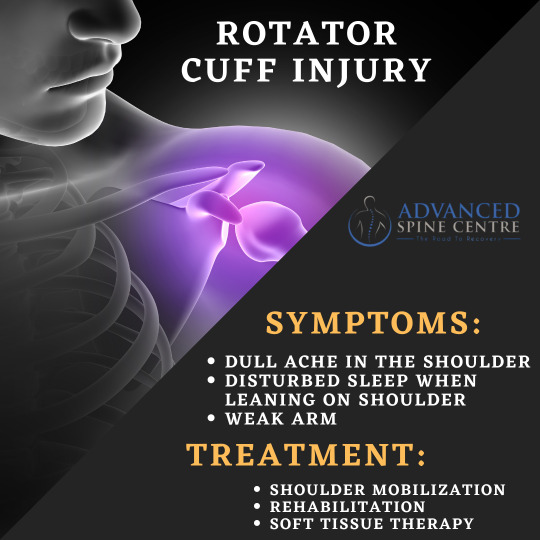
Untreated #RotatorCuffInjury can cause you long-term issues. To avoid frozen shoulder, seek natural and safe pain relief treatments from a #Physiotherapist. The therapy will help improve flexibility and strengthen muscles around the shoulder joint.
Reach out to an experienced Physiotherapist to have a non-surgical procedure.
Check out #AdvancedSpineCentre services to get a comprehensive cure.
https://bit.ly/3ptq9J7
0 notes
Text
youtube
Here is the Follow Along Pilates and Physical Therapy Exercises For Shoulder Impingement Syndrome it is a gentle progression. I made a previous video discussing the anatomy, function of the rotator cuff muscles and the importance of posture to help improve overhead and reaching activities and to prevent inflammation on your rotator cuff tendon insertion due to wear, tear fraying and irritation on the hinge of for you AC joinbt before inserting to your greater tubercle and elsser tubercle of the humeral bone and due to poor posture that causes shoulder pain and impingement,
Did you know your posture could affect your shoulder's health? With poor posture , it causes more strain, pressure, limited ROM and weakness on your rotator cuff muscles. Make sure do this video first https://youtu.be/CPCLhwC0bO4 before embarking to this follow along progression.
This video is Pilates and Physical Therapy Exercises For Shoulder Impingement Syndrome Follow Along with 5 seconds hold 10 reps one each exercise movement demonstrated . Pilates and physical therapy treatment , utilizing the elastic band and your own body weight for a closed kinematic chain exercises for shoulder pain, stretches and strengthening for your shoulders and upper back for instant pain relief to improve posture fix and deep scapular rotator cuff muscles activation. The 4 rotator cuff muscles are supraspinatus , Infraspinatus, Tere’s minor and subscapularis and in this video i will explain in detail how to stabilize them, improve posture to decrease impingement on the subscromial space where the 4 muscles bundled together into 1 tendon to attached on the greater tubercle of humeral bone . These exercises will eventually help the inflammation, pain and pinch on your tendon to prevent a rotator cuff tear or injury . I will also show in the end how to stretch your low back and upper back muscles. I incorporated the Pilates based and Physical therapy exercises combination. You could also check my neck pain nerve glides if you are also having pinch nerve or another postural exercises you could incorporate here . https://youtu.be/dpdrsrnMyIc If the exercises are too difficult , always remember to pace yourself, quality versus quantity.
Posture Series for neck and upper back
*** https://youtu.be/VzeeIpLM8hM Forward Head and ROunded Shoulders Follow Along Fix
*** https://youtu.be/CPCLhwC0bO4Shoulder Impingement Syndrome Treatment Program
*** https://youtu.be/2dMoQjdBrF8 Top 5 Pilates Exercises for Shoulder Impingement and Better Posture
*** Temporomandibular Joint Disorder | Jaw Pain Treatment Plan Exercises https://youtu.be/6hixvKszMcU
***Winging Of Scapula Pilates And Physical Therapy Exercises Fix! https://youtu.be/73IqsOZGTXc
***C6 C7 Herniated Disc Neck Pain and Weakness Exercises Relief https://youtu.be/ivvlx789p2k and progression https://youtu.be/4NRoqFzmyPI
Annie uses her experience as a physical therapist and Pilates instructor to guide a Pilates specific routine with a program to target difficult to treat diagnosis such as low back pain with nerve involvement, neck pain, posture series, abdominal hernia, pelvic floor pain and weakness, upper and lower extremities weakness and pain and overall health and wellness to be strong, fit and quality of life.
#Pilates #shoulderimpingement #rotatorcuffinjury #posture #anniepilatesphysicaltherapist #followalongshoulderimpingement
Please Subscribe to my YouTube https://www.youtube.com/c/AnniePilatesphysicaltherapist
My Social accounts:
Facebook : Annie teaching vacation Pilates instructor, physical therapist Pilatesphysicaltherapyannie
www.facebook.com/pilatesphysicaltherapyannie
Instagram: www.instagram.com/anniepilatesphysicaltherapist
Twitter: www.twitter.com/honeyannie07
Reddit: www.reddit.com/u/Annie-pilates
Patreon: https://www.patreon.com/anniepilatesphysicaltherapist
Pinterest : www.pinterest.com/anniepilatesphysicaltherapist
Tumblr : www.tumblr.com/anniepilatesphysicaltherapist
Annie Pilates Physical therapist , recommend you consult with a physician before starting any exercise program. The exercises give here are not meant to treat, diagnose medical condition. Please stop if you have any increasing pain or discomfort. You understand that any physical activity can pose a risk and this channel you assume all risk and injury, you are voluntarily participating in these activities, assume all risk of injury to yourself.
#shoulderimpngement#shoulderpainfix#pilates#physicaltherapy#anniepilatesphysicaltherapist#impingmentshoulderfix#rotatorciffinjury#rotatorcuffinflammation#improveposture#posturefix
0 notes